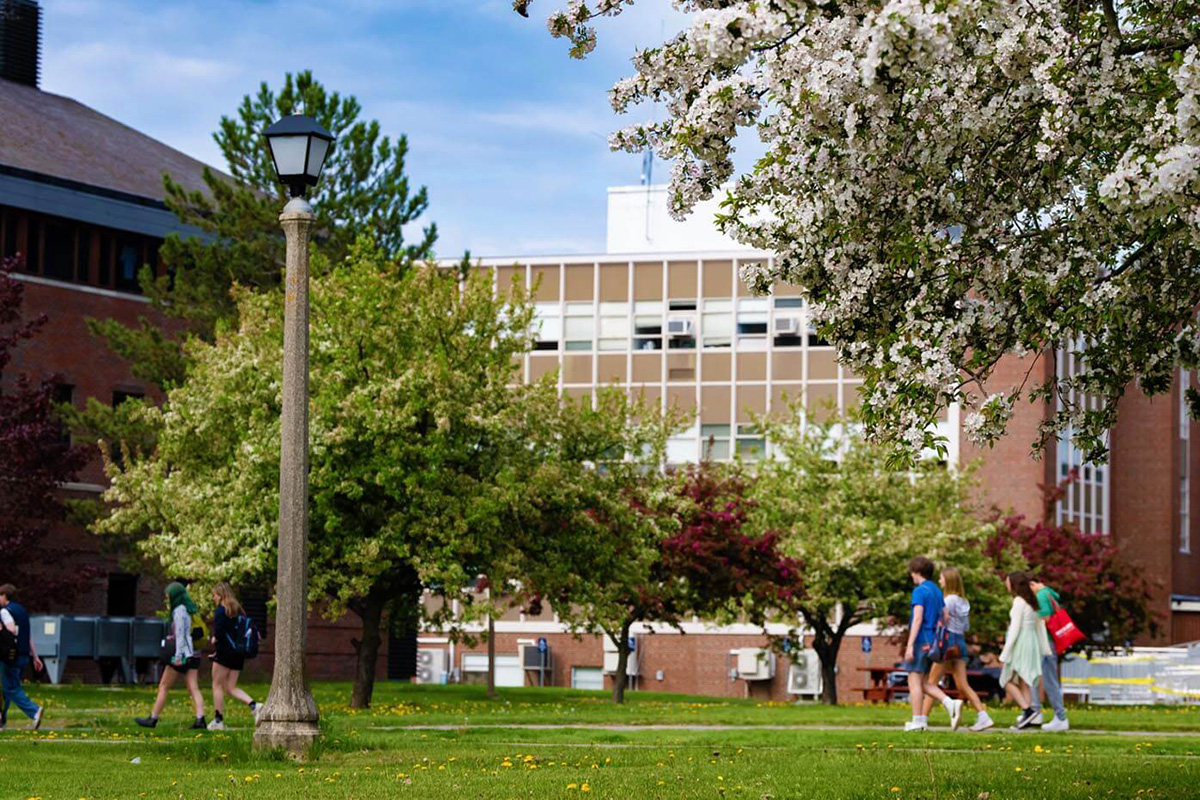
UMaine study examines intersections between campus hazing, white supremacy
College campuses across the country are working to put an end to hazing, a form of interpersonal and community violence that is often normalized and minimized through tradition. At the same time, post-secondary institutions are grappling with legacies of racism and white supremacy rooted in similar norms and practices.
A new study led by University of Maine researchers explores how these two issues are related and how hazing often reflects and is used to reinscribe white supremacy.
“Tradition is almost always framed as something good,” says Elizabeth Allan, a UMaine professor of higher education and the nation’s foremost expert on hazing and hazing prevention on college campuses.
“What we have found through research is that tradition is often used as a sort of euphemism for hazing, so students who undergo or perpetuate hazing practices will point to tradition as a reason for doing it,” Allan says. “At the same time, there are parallel and intersecting traditions of whiteness on college campuses because of the histories of these institutions, and the people who founded them and who attended them. So we wanted to study those connections to get a better idea of how people working in higher education today can address both problems.”
For the study, Allan worked with UMaine assistant professor of higher education Kathleen Gillon, as well as Cameron Beatty, an associate professor of educational leadership and policy studies at Florida State University; Cristobal Salinas Jr., an associate professor of educational leadership and research methodology at Florida Atlantic University; and David Kerschner, a 2021 graduate of UMaine’s doctoral program in higher education and a postdoctoral fellow for research and evaluation at StopHazing. Gillon, Beatty and Salinas co-edited an edition of New Directions for Student Services in 2019 that focused on issues of race, ethnicity and culture in fraternity and sorority life.
“It’s easy to identify hazing when it results in physical harm or death. Those are very tangible, very visible outcomes,” Gillon says. “We wanted to highlight some of the potentially invisible harms of hazing for people who are subjected to or feel like they have to take part in activities that have nothing to do with their culture or their identity in order to belong to a group or even set foot on campus.”
The researchers examined interviews, largely from focus groups, with 345 higher education staff members, students and alumni across 12 institutions who shared their perceptions of campus culture and hazing climate. The majority of the interviewees were from campuses that have participated in the Hazing Prevention Consortium, a group of colleges and universities convened by Allan’s StopHazing organization to build capacity for planning, developing and evaluating data-informed strategies for ending hazing practices.
An analysis of the interviews revealed three overlapping themes related to ways white supremacy is propagated through hazing: the influence and involvement of alumni, pride in the institution and the way space is used to other non-white individuals.
“In terms of alumni, in certain organizations such as fraternities and sororities, athletic teams and honor societies, the alums who are very involved or who come back as advisors tend to reflect a particular demographic,” Allan says. “It gets reinforced: ‘This is what we did and this is what it means to be a member of this group.’ So an expectation gets handed down or passed along to current students.”
Although many of the examples cited in the interviews reflected less visible or hidden practices that reinforce white supremacy, there were some overt cases of racism too. Gillon points to one interviewee who discussed a scavenger hunt where members of a campus group were supposed to find and have their picture taken with Asian American students.
“This was a historically white student organization. So the idea of running around campus to find people who look different from you normalizes the unequal power dynamics there and puts on display how communities of color are demonized or exoticized,” Gillon says.
Allan and Gillon say they hope the research will be helpful to individuals and institutions working to combat hazing and address historical inequities in higher education. They plan to present their findings at a Hazing Prevention Consortium Summit that will be attended by representatives from nearly 20 different colleges at UMaine June 4-5. They presented the paper in March at the annual conference of the American College Personnel Association, one of the leading professional organizations for student affairs professionals.
“You can’t really change something you don’t see,” says Allan. “So it’s just helpful to name the problem and show some of the dynamics and complexities of these larger systems of power, so that you can begin to interrupt them.”
The study, “Unsettling Tradition: Exploring Intersections of Campus Hazing and White Supremacy,” was published in the International Journal of Qualitative Studies in Education. It is available online.
Contact: Casey Kelly, casey.kelly@maine.edu
